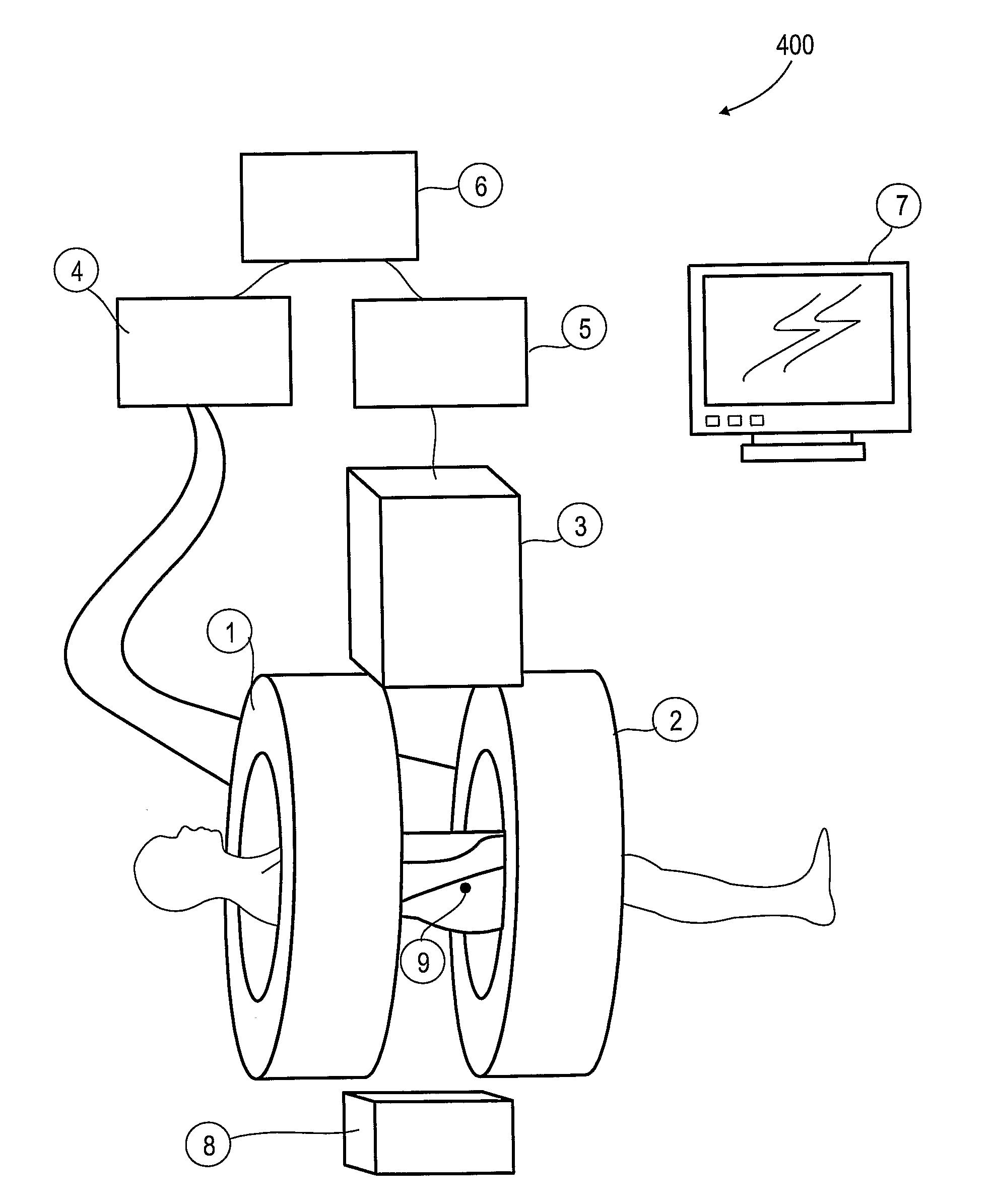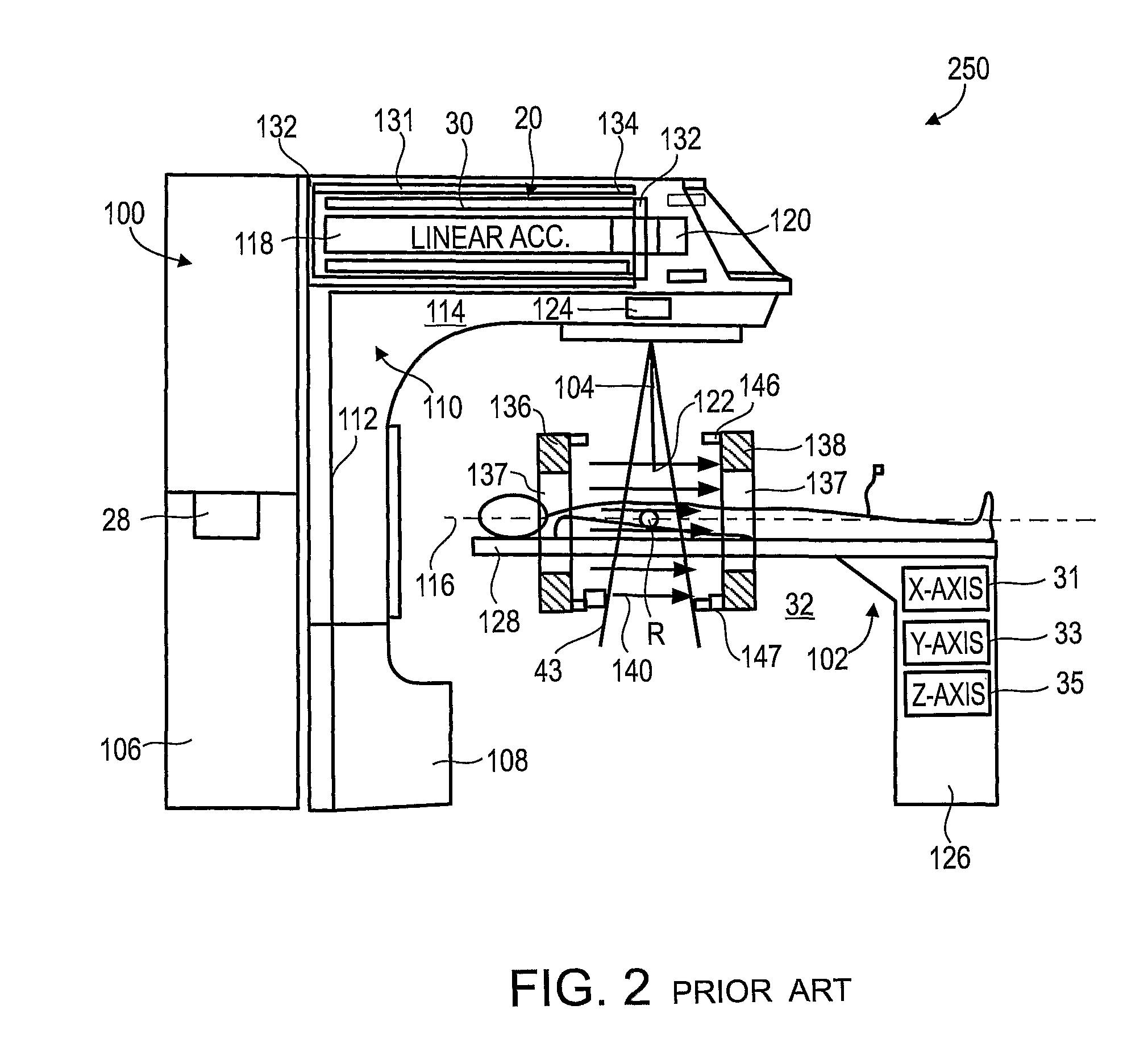Combination MRI and Radiotherapy Systems and Methods of Use
a radiotherapy and combination technology, applied in the field of combination radiotherapy and mri systems, can solve the problems of difficult to achieve adequate accuracy, difficulty in achieving adequate accuracy, and difficulty in achieving the requirement for patient positioning accuracy
- Summary
- Abstract
- Description
- Claims
- Application Information
AI Technical Summary
Benefits of technology
Problems solved by technology
Method used
Image
Examples
Embodiment Construction
[0063]The present invention, in some embodiments thereof, relates to combination radiotherapy and MRI systems and methods of using them, and more particularly, but not exclusively, to combination systems in which the main MRI magnet can be quickly ramped up for imaging and down for radiotherapy. Alternating periods when the field has been ramped up, and MRI images are acquired, with periods when the field has been ramped down, and doses of radiation are applied to a tumor or other target in a patient, may allow nearly real-time MRI images of the target, and hence more accurate application of radiation, while avoiding the problems, listed above, that make it difficult to acquire MRI images during the application of radiation to a patient.
[0064]An exemplary embodiment of the invention concerns a combined MRI and radiotherapy system, in which an MRI magnetic field source is ramped up to a magnetic field used for imaging, and ramped down to a much weaker field, or to zero magnetic field...
PUM
 Login to View More
Login to View More Abstract
Description
Claims
Application Information
 Login to View More
Login to View More - R&D
- Intellectual Property
- Life Sciences
- Materials
- Tech Scout
- Unparalleled Data Quality
- Higher Quality Content
- 60% Fewer Hallucinations
Browse by: Latest US Patents, China's latest patents, Technical Efficacy Thesaurus, Application Domain, Technology Topic, Popular Technical Reports.
© 2025 PatSnap. All rights reserved.Legal|Privacy policy|Modern Slavery Act Transparency Statement|Sitemap|About US| Contact US: help@patsnap.com



